This spring, like so many before us over the centuries, we’re venturing into the exciting world of beekeeping!
We both have some limited previous experiences with honey bees. I personally was very fortunate in middle school to have a wonderful teacher, Mrs. Miller, who was absolutely passionate about bees. She loved all animals, but was especially enthusiastic about honey bees. We had an observation hive mounted on the window of our classroom, and any time she could weave morsels of bee biology or behavior into our lesson plans, she did. I even remember knitting a bee, in two colors (the only time I’ve ever knitted in two colors), in an art class. It was a subtle attempt to teach us basic bee anatomy, and our knitted bees had to have a head, a thorax and an abdomen, replete with wings and antennae! I wonder what ever happened to that bee?
Many today would no doubt consider keeping a hive so close to a classroom to be a liability, but then again, honey bees are misunderstood by many. In retrospect I feel very fortunate to have had such a teacher, that provided her students with such a fantastic up-close and personal glimpse into the world of bees and bee-society. Without that experience I might never have considered venturing into beekeeping as an adult. I know if Mrs. Miller was still with us, she’d ‘bee’ so excited for us this spring, and no doubt thrilled that at least one of her students has gone on to be passionate about bees too.
However, that said, neither of us has ever been a beekeeper, so this is still a rather exciting (and somewhat daunting) leap into a relative unknown. We’re trying not to jump into beekeeping completely blind though. We understand that there is both an art, and a science, to beekeeping. The fundamentals haven’t changed much in centuries, but over the years much has been written, and passed down through generations, and we recognize that we have so very much to learn.
For us one of the best ways to learn about honey bees, and the practical aspects of beekeeping, has been talking to other beekeepers. We are now members of both the Santa Cruz Beekeeper’s Guild, and the Santa Clara Valley Beekeepers Guild. Each guild meets once a month, and discusses various topics related to honey bee husbandry, including equipment, seasonal hive management, pests, and diseases.
As we were planning to add bees to the farm this spring, we’ve been attending guild meetings for the last 6 months, in addition to reading through numerous books, bee journals, and online resources. As new about-to-bee beekeepers, one thing has become clear to us in recent months. If you put 5 beekeepers in a room, there will 5 opinions on how ‘best’ to do something related to keeping bees. This has been perhaps our most valuable first lesson in beekeeping.
There is no single right way to manage honey bees. Some methods work, some don’t, some methods work for some beekeepers at certain times of year, or in a particular location, some don’t. Some beekeepers face pests and diseases that others don’t. My science-oriented brain usually wants those clear-cut, black and white, yes or no answers, but I’m learning that herein lies the art of beekeeping. There may not always be hard and fast answers, or guaranteed solutions to a problem. Finding what beekeeping methods and solutions work for you, for your bee yard, for your bees, in your location, is part of what being a beekeeper is all about. This, for us, will be part of our beekeeping adventures over the coming months.
Although pests and predators may change from one bee yard to the next, the fundamentals of beekeeping remain relatively constant. The biggest first challenge for us to overcome as ‘newbees’ was familiarizing ourselves with all of the equipment used in beekeeping, and then sorting through which equipment is required at a minimum to get started, versus equipment that we might want to add down the road.
One of the more efficient ways we found to familiarize ourselves with beekeeping equipment, was to browse through some of the popular beekeeping catalogs. Two that have been resident on our coffee table for the last few months are Brushy Mountain Bee Farm, and Dadant.
Browsing catalogs such as these helped to provide us with an overview, not just of the equipment, but also of the costs associated with keeping bees. Unless you’re able to simply assume someone else’s hives, it does take an investment of resources to start up as new beekeepers. Some equipment, like smokers, and various hive tools, if we take care of them, should be a one-time purchase. Other equipment, such as frames, foundation, and hive boxes, may require re-purchasing, or rebuilding, over time. Feed supplements, breeding equipment, and extraction equipment may or may not be required, depending on the methods we choose to use in keeping bees, and extracting honey.
Although used equipment may be an option, and help to save money, purchasing used equipment can also be an expensive mistake. Anything metal, such as smokers, frame lifters, and honey extractors can easily be sterilized if necessary, and I have no problem with the idea of acquiring those components as used equipment. Wooden hive boxes, frames and natural comb however can all carry disease, and are virtually impossible to clean.
It’s difficult to learn much about caring for honey bees without becoming at least somewhat familiar with the most common pests and diseases of honey bees, and how they are spread. Between varroa mites, tracheal mites, small hive beetles, wax moths, and diseases such as chalkbrood, nosema, European and American foul brood, and of course ‘colony collapse disorder’. Not to mention marauding mice, antagonistic ants, yellow jackets, and exposure to pesticides, sometimes it’s a wonder honey bees survive at all, but we’ll save some the details of those challenges for some future posts. Infectious diseases however are the greatest concern with acquiring used equipment, so we’ll be starting off with everything new.
At the beginning of February we ordered our first two packages of bees, and they’re projected to arrive in early April. A ‘package’ is basically a colony, consisting of 3 lbs of honey bees, shipped along with their mated Queen bee. Each package will need to be installed into a separate hive. However, before this last weekend, we had no hives here at the farm. Hive selection alone is an entire post in and of itself, so I’ll get into the details of that in our next bee post, as there’s more than one type of hive, and various ways to configure hive equipment for bees. For now though, suffice it to say that we have a pile of hive equipment in our dining room to nail together and paint before the bees arrive…
In our next post we’ll explain what we chose, and why!

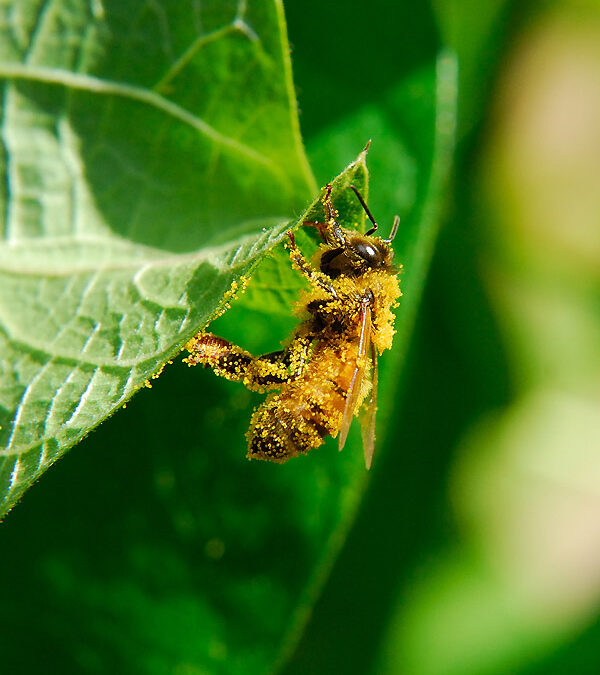
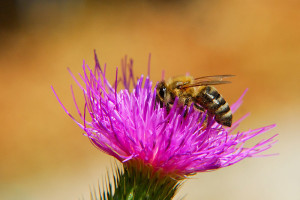
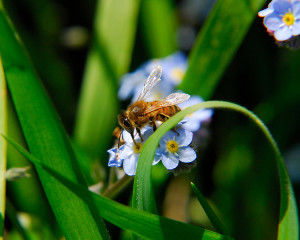

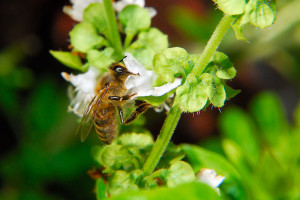
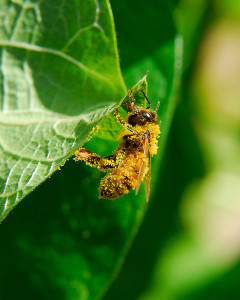
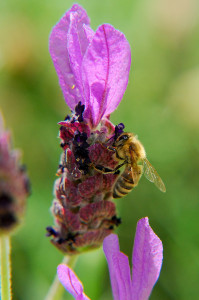
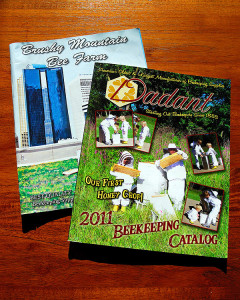
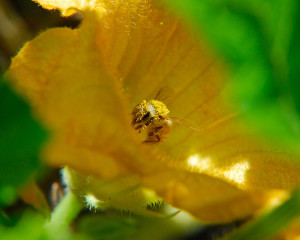
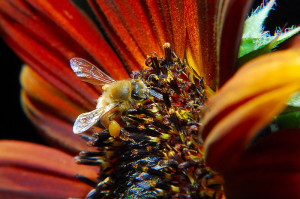
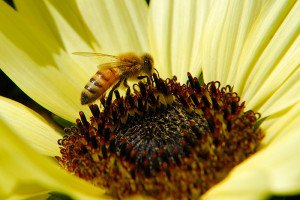
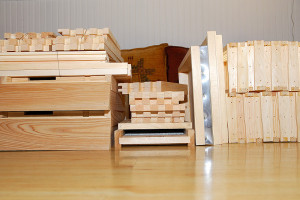







Dear Clare, It is so true that once one ivestigates a certain topic, whatever it may be, there is always so much more to it than first meets the eye. Clearly beekeeping will keep your ‘little grey cells’ occupied for some considerable time.
What a marvellous idea your school had to mount an observation hive on the classroom window. Fascinating viewing…I hope that this did not distract from the teacher!
Fortunately the teacher was very engaging, although she was occasionally distracted by the bees, especially when the Queen left and the bees swarmed into some nearby shrubbery! 😛 They were recovered though, and returned to the hive soon after.
If the care and attention you have given to your chickens and turkeys is any indication, your bees will be some of the luckiest colonists on earth! You had a wonderful teacher. As a docent at a couple of local botanical gardens, I have presented classes to to various groups of children over the years. It’s always nice to think there may be one mind out there that is absorbing it all and to whom it will make a difference. Your teacher would certainly be proud of you! I look forward to reading all about your bees!
I have some experience teaching, and you do wonder sometimes if you’re getting through. I feel that even if you reach just one student, it’s all worth it. I know she’d be excited about our bees!
Hi,
Good luck with your Bees, I look forward to seeing photos and following your journey, it’s been very interesting reading about your Chickens/Turkeys and I imagine it’ll be just as interesting reading about the Bees!
It will be fun to photograph our own bees. The bees in this post were all in our gardens, but I have no idea where they came from. I’m sure we won’t run out of blog posts this year though!
I’m kind of bummed to find that the closest bee guild is 30 miles away. 🙁 Solano county just doesn’t have one.
There must be others keeping bees in Solano county. What a shame. Maybe you should start a bee guild? In the meantime, I did see at Bee Charmer’s in Sonoma that they link to Azure Garden’s in Vallejo for swarm removal in Solano Co. I wonder if it might be worth contacting them to see if they may have swarm bees available in the spring? You may have to provide the nuc, but it might be worth an inquiry to save going further afield. There’s contact info here:
http://www.azuregardens.com/index.html
Good luck!
Do they require regular “maintenance”, meaning do you have to feed them like say a dog, or once they are started they’re self sufficient?
Generally, most beekeepers seem to say that keeping bees requires a little more work than keeping a cat, but less than a dog. A strong healthy hive, from what we’ve gleaned so far, should be checked on every 10-14 days. Sometimes the bees may need to be fed (pollen or syrup) depending on what is blooming. Even if they don’t necessarily need feeding, it’s important to check on your bees to catch any potential problems early (and there are lots of things that can potentially go wrong inside a hive). So it’s not necessarily complicated, or too involved, but not really hands off either.
Looks like somebody’s going to beeee busy putting those frames and supers together!
Things will be buzzing around here this weekend. I see lots of gluing and nailing of hives and nucs in my immediate future! 😛
Good luck with the bees. I think it is wonderful of you to start raising them considering their plight as of late. Our area has suffered greatly at bee loss and our local keepers have been keeping us as Master Gardeners abreast of recent development. I always marveled at those pollen coated bees. I wondered how they get back off the flower.
ah yes, that eternal question, to bee or not to bee….congratulations! looking forward to the updates.
How funny that the two questions I was most curious about were why you opted to buy a package (as opposed to getting a wild-caught swarm), and who you bought from.
We’re actually trying to get a wild-caught swarm this spring, the problem is that there’s no guarantee of bees this spring if we go that route. We’re starting with two packages to hedge our bets, but with the realization those may be weaker bees, although a lot of swarms are from other beekeeper’s packages from the spring 😉 If all goes well though, we may have three hives by summer…we’ll have to wait and see!
Looking forward to see your project go forward! I try to encourage bees by planting all the CA native plants I can get my hands on. Bee sure to get those neat little smoky things. And watch ‘Ulee’s Gold’ with Peter Fonda. Sue
Have fun on your new adventure! You pictures are beautiful.
What and informative post. We used to have bees when I was a child back in Ireland but we never quite got to the honey! A very cold winter wiped them all out and Dad never tried again. Best of luck in your new venture
Clare how exciting! although there’s much to learn in short order I can’t help but think you must be very excited to see your new bees and try your hand at raising them. Looking forward to updates on how this project comes along.
Your bee photos are just beautiful, Clare. I love honeybees too and have never found them to be aggressive. Of course, I’m sure I’ve not encountered those nasty Africanized buggers as yet, so I speak boldly. I have fun childhood bee memories as well. My best friend’s father kept bees as a side business, and we got to help with the hives on occasion. A bonus was that he always gave me a jar of honey to take home.
I’m a novice when it comes to bees, but have always been fascinated by them. The lavender and rosemary blooms are bee magnets right now, and I’m guessing that they’re mostly of the European variety, with a few native bees in the mix. A former coworker of mine (slightly eccentric, but I say that with all due fondness) used to order honeybees from Texas and his package of hymenopterids would show up at our workplace like clockwork every year. I’m looking forward to following your beekeeping adventures, just as much as I look forward to reading your poultry posts.
I am looking forward to following you beekeeping venture. Good luck!
Bee..autiful photos Clare. May your new friends bring you much joy!
I’ll be paying attention as you report your progress and looking forward to more bee photos.
…loved the pollen covered bee on the bean leaf – great catch
I’m quite envious of you Clare. We are not allowed bees in the garden with the deeds of the house. I loved the picture of that little bee covered in pollen – it’s as if someone has come along with a powder puff and give him a dusting.
I’ll just daydream about bees for now – with the help of your blog! but a neighbor of mine will surely find this post interesting – she is seriously considering going in for bees.
oh how I love honey! have fun….
Hi Clare, what an exciting new project! Decades ago, when I was a Girl Scout, I got a beekeeping badge through access to beehives kept by some relative of our troop leader. Bees have fascinated me ever since. All the bee diseases, practically plagues, one reads about are scary, though, but I bet that you will be able to master that problem and raise healthy bees. Good luck! Barbara
Clare, I was just checking back to see if you had anything blooming in the hen house for GBBD. LOL.Your chickens are such a colorful bunch.
Congrats with your new babies!
I love reading about your newest goings on there. Always something interesting! It seems that bee keeping has started to become a bit more popular around here, I’ve seen several classes offered on it. Like everything else that comes to live on your farm, those will be some very lucky bees to get to live there.
Oh, goodie, bee posts! I always learn so much from your blog, Clare; I’m looking forward to being educated about honey bees.
I’m so excited for you! Bees have been on my list for two years so I hope to live vicariously through you. With all of your preparation I have no doubt you will be successful.